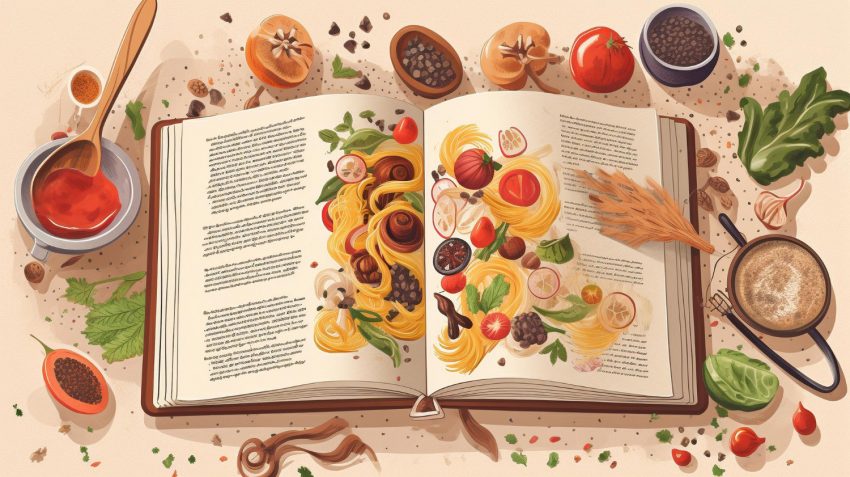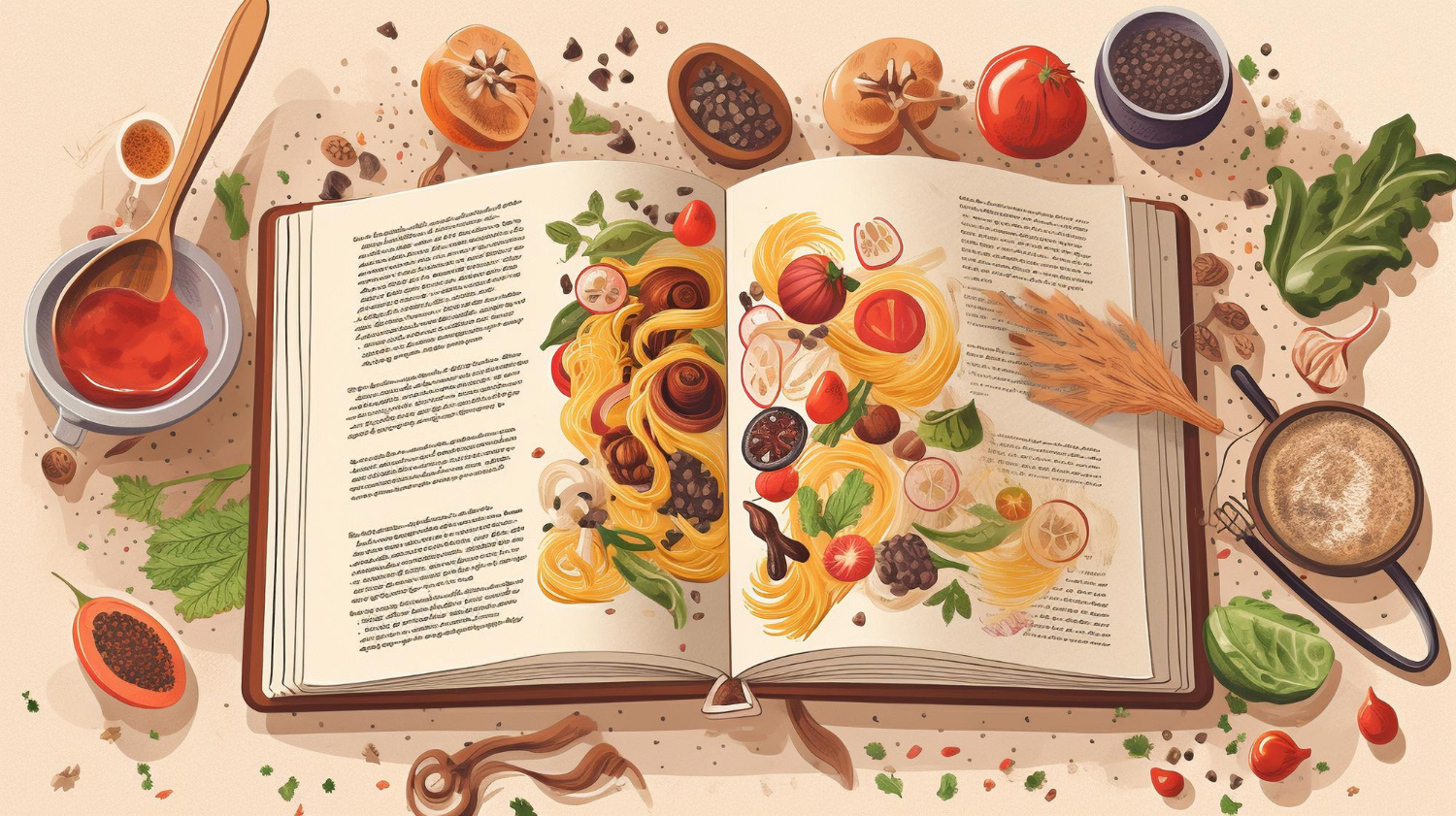The Most Common Places With Asian Recipes: from Twitter to Cookbooks

When it comes to culinary delights, Asian cuisine takes the cake. With its diverse ingredients, rich flavors, and vibrant cooking traditions, exploring and preparing Asian recipes is a delightful journey for your taste buds. Luckily, there are numerous resources out there to help you dive into this flavor-packed adventure.
No matter if you’re a newbie or a seasoned chef, there’s something for everyone when it comes to discovering Asian recipes. From traditional cookbooks that have stood the test of time to popular social media platforms like Twitter that provide an abundance of inspiration, you’ll find countless places where these delectable dishes await.
So get ready to embark on an unforgettable gastronomic experience as we showcase some of the most common spots where you can unearth authentic Asian recipes.

Twitter: A Hub of Culinary Inspiration
Looking for culinary inspiration, particularly Asian recipes? Look no further than Twitter! This social media platform isn’t just about news and entertainment; it’s a goldmine of delicious food ideas. You will probably find it useful to learn how to download video from twitter on macbook.Here are some tips on how to make the most of Twitter’s culinary scene:
- Follow Food Bloggers and Chefs: Expand your recipe repertoire by following food bloggers and professional chefs who often share their favorite Asian dishes on Twitter. You’ll be treated to a constant flow of cooking tips, stunning food photography, and endless recipe ideas. Engage with these accounts, spark conversations, and learn from fellow food enthusiasts.
- Embrace Hashtags: Unlock a treasure trove of Asian recipes by utilizing relevant hashtags like #AsianRecipes, #Foodie, and #CookingTips. These hashtags connect you with individuals, culinary experts, and active food communities sharing an array of delectable recipes. Save the ones that catch your eye and join in conversations with others who share your passion for Asian cuisine.
- Engage in Twitter Chats: Dive into the world of virtual discussions focused on food and cooking through exciting Twitter chats. Participating in chats dedicated to Asian cuisine can introduce you to new flavors, ingredients, cooking techniques while connecting you with knowledgeable experts and fellow foodies alike. Immerse yourself in these discussions where questions are encouraged.
Food Blogs and Websites
The online world is a treasure trove of Asian recipes, with food blogs and recipe websites showcasing a wide array of flavors and cooking techniques. To effectively navigate these platforms, here are some tips:
- Focus on Cuisine-Specific Blogs: Seek out food blogs that specialize in Asian cuisine or focus on a particular country’s culinary traditions. These blogs offer an authentic insight into the culture along with personal anecdotes that enrich your cooking experience. Notable examples include “Just One Cookbook” for Japanese dishes, “Rasa Malaysia” for Malaysian recipes, and “Maangchi” for Korean delights.
- Explore Recipe Aggregator Websites: Recipe aggregator websites like Allrecipes, Food Network, and Yummly boast extensive collections of Asia-inspired recipes contributed by both home cooks and professional chefs. Utilize their handy search filters, user reviews, and ratings to find tried-and-tested recipes suited to your preferences and skill level.
- Trust Established Food Websites: Esteemed sites such as Bon Appétit, Serious Eats, and Saveur feature Asian recipes curated by renowned chefs and culinary experts. Here you’ll discover abundant information along with detailed recipes and helpful step-by-step guidance to embark on your Asian culinary exploration confidently.
YouTube and Cooking Channels
YouTube has emerged as a hub for those who thrive on visuals and are passionate about the culinary arts. Let’s explore how you can tap into YouTube’s potential to unlock a treasure trove of Asian recipes:
- Stay connected with Cooking Channels: A multitude of channels on YouTube have exclusively dedicated themselves to the realm of Asian cooking. These channels present an amalgamation of traditional recipes, contemporary twists, and step-by-step tutorials. By subscribing to revered channels such as “Maangchi” or “Chinese Cooking Demystified,” you gain access to comprehensive guidance, culinary techniques, and valuable cultural insights indispensable for mastering Asian cuisine.
- Immerse yourself in Cooking Shows and Documentaries: Alongside individual cooking channels reside captivating shows and documentaries that revolve around the vibrant world of Asian gastronomy. These productions delve deep into regional delicacies, local ingredients indigenous to specific areas, as well as age-old cooking methodologies practiced across generations. As acclaimed chefs take center stage, they implore viewers like you to embark on an educational journey abundant with their expertise and undying passion for the artistry behind Asian cooking.
- Emerge within the Community: Venture into the realms of YouTube’s dynamic community forums and comment sections—a haven teeming with creators brimming with knowledge alongside other passionate aficionados of culinary crafts. With the power to ask questions, share your own culinary tales, and seek advice on Asian recipes or techniques, you’ll find a collaborative haven for learning and building a network of supportive, like-minded individuals.
Cookbooks
When seeking inspiration in the kitchen, cookbooks have long been a reliable go-to. They present a curated selection of recipes while offering cultural insights and captivating storytelling that enhance your culinary journey. And when it comes to Asian cuisine, there is an abundance of cookbooks to choose from. To help you make the right choice, consider the following:
- Dive into specific regions: Look for cookbooks that center around a particular Asian region or country. These books delve deep into the distinctive flavors, ingredients, and techniques unique to that cuisine. Some noteworthy examples include David Thompson’s “Thai Food,” Tadashi Ono and Harris Salat’s “Japanese Soul Cooking,” and Priya Krishna’s “Indian-ish.”
- Explore the expertise of professional chefs: Renowned chefs often publish cookbooks showcasing their mastery and innovative approaches to Asian cooking. These books offer a blend of traditional and contemporary recipes while providing valuable insights and tips from culinary geniuses like Yotam Ottolenghi, Masaharu Morimoto, and Fuchsia Dunlop.
- Discover family traditions: Family and home cookbooks unveil cherished recipes passed down through generations. They invite you into personal kitchens where individuals have perfected their family’s traditional dishes – emphasizing heritage and sharing heartfelt stories behind each recipe. Authors like Fuchsia Dunlop, with her work “The Food of Sichuan”, and Asha Gomez, who penned “My Two Souths”, beautifully exemplify this focus.
Conclusion
The realm of Asian cuisine is vast, and there are countless avenues to explore when seeking out recipes. From real-time inspiration on social media platforms like Twitter, where food bloggers and chefs share their creations, to the treasure trove of recipe websites, food blogs, and YouTube channels that offer an endless supply of cooking techniques and tips. For a more curated experience enriched with cultural insights, both regional cookbooks and those authored by esteemed chefs can guide your culinary exploration.
These platforms hold immense power – they grant you the opportunity to embark on a flavorsome voyage across diverse regions within Asia. It’s a journey that will tantalize your taste buds while expanding your repertoire in the kitchen. So prepare yourself for an adventure that promises to unearth the joys of preparing flavorful Asian dishes right in your own home.
